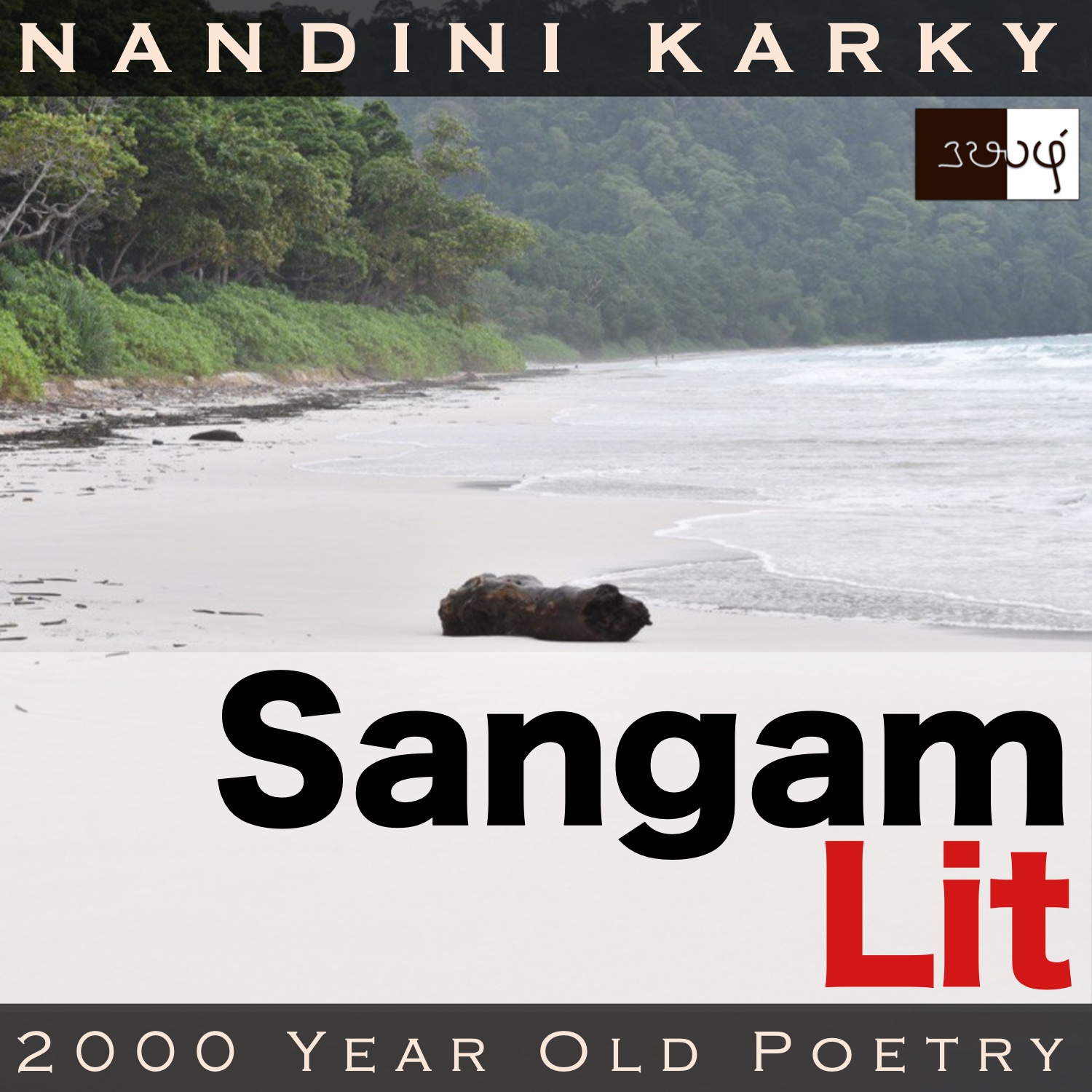Podcast: Play in new window | Download
Subscribe: Apple Podcasts | Spotify | Amazon Music | Android | iHeartRadio | TuneIn | RSS | More

In this episode, we walk by the shore of Sangam Literary work, Natrinai 49, written by Neythal Thathanaar. True to the name of the poet, the poem is set in the ‘Neythal’ landscape or the coastal regions and speaks in the voice of the lady’s confidante to the lady, lamenting about the situation at hand.
படுதிரை கொழீஇய பால் நிற எக்கர்த்
தொடியோர் மடிந்தெனத் துறை புலம்பின்றே;
முடி வலை முகந்த முடங்கு இறா பாவைப்
படுபுள் ஓப்பலின் பகல் மாய்ந்தன்றே;
கோட்டு மீன் எறிந்த உவகையர் வேட்டம் மடிந்து
எமரும் அல்கினர் ஏமார்ந்தனம் எனச்
சென்று நாம் அறியின் எவனோ தோழி!
மன்றப் புன்னை மாச் சினை நறு வீ
முன்றில் தாழையொடு கமழும்
தெண் கடல் சேர்ப்பன் வாழ் சிறு நல் ஊர்க்கே?
As my familiarity with Sangam poetry continues to increase, I see words waving and calling out to me like friends meeting in school. ‘திரை’ meaning ‘waves’, ‘எக்கர்’ meaning ‘sand’ and even ‘ஓப்பல்’ meaning ‘chase away’ put a grin on my face. What once was unfamiliar is becoming like family to me! As the words went on, the air filled with the delicious fragrance of not one but two trees, the ‘புன்னை’ or the ‘mastwood’ and the ‘தாழை’ or the ‘screw-pine’ tree. The poem ends with ‘தெண் கடல்’, to be expanded as ‘தெளிந்தக் கடல்’ and paints before our eyes, the clear waters of that ancient shore.
Walking along further down the coast, we see the lady’s confidante in conversation with the lady. In describing the day’s events, she seems to be musing on the difficulties ahead for the lady’s tryst with the man at night. She says,“The shore is wallowing because those bangled maidens, done with their play, have moved away from the milk-coloured sands threshed by its roaring waves. In your maidenly act of chasing away the birds aiming to snatch away shrimps caught in those knotted nets, the day has ended. Delighted at their catch of horned fish, your kith and kin have decided to end their hunt and have retired home. So, they are bound to keep their eyes on us. What if I go and find out what’s in the mind of your man, my dear friend? I propose that I go to his good, little village by the clear waters of the sea, where the ‘Punnai’ tree with its arching branches joins hands with the ‘Thazhai’ tree growing nearby and spread the fragrance of their flowers all around!’
Let’s dig our heels deeper and inhale the life around in this sea-side hamlet. The first interesting element is how the shore is humanised by saying that it’s sad and lonely that the playing maidens have left. Nature seems to be one with humankind in this perspective. Then, there is the description of the milky sand on the beach. How white it should have been, for it to be said to have the colour of milk! Right here on this land, were sands, whiter than the whitest we have seen in our current age of mills and spills! We glimpse at the day-to-day life of the young ladies of then, who were given the task of protecting the catch by chasing away birds that come to snatch away the spread. As we stand here, with the waves caressing our feet, we also see in our mind’s eye, the happy voices of fishermen returning from the seas with a rich catch. Horned fish seems to be the much hunted! Perhaps, it was a struggle to catch and thus, tired by all the wrestling with the sea, the fishermen have ended their hunt too and are retiring to their homes. By saying this, the confidante is bringing forth the main obstacle in the lady’s plan to meet with her man.
In the description of the man’s hamlet, two trees are brought forth before our eyes. Being used to seeing only barren beaches, devoid of trees, a friend recently questioned if it was possible for trees to grow right on the beach. These Sangam poems answer with solid evidence. In this poem, we meet two such trees by the sea, the ‘Thazhai’ which we have seen in other poems before – that ‘Thazhai’ with the famous ‘Pandanus’ leaves. The other tree is the ‘Punnai’ or the mastwood. Reading more about this, I was fascinated to know the symbiotic relationship between these trees and the shipbuilders of ancient times, who preferred its sturdy wood to build their ships. Apparently, the Punnai tree grows to a huge size and lets its branches arch into the sea, so that the ocean currents would carry off its seeds afar. And those seeds would in turn, grow into these thick trees, which would then carry humans afar. Incidentally, these two different trees spreading their fragrance together is a sensuous metaphor for the happy union of the man and the lady. I wish to end with a wish for those trees of yore to once again bloom in the shores of today and fill our lives with the fragrance of that good, little life of yesterday!




Share your thoughts...